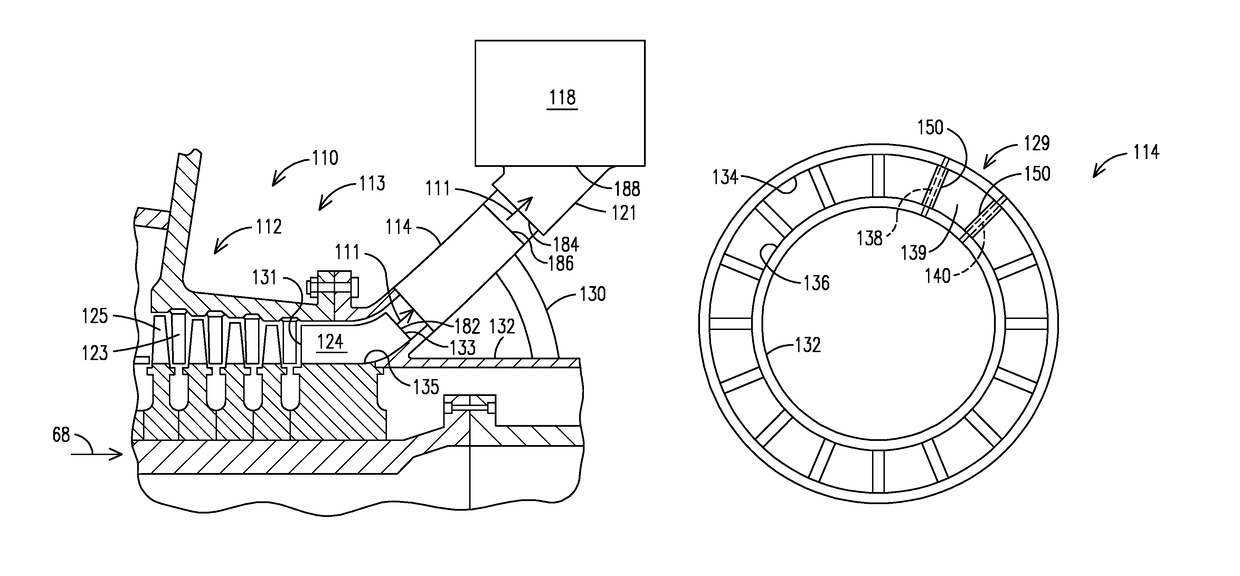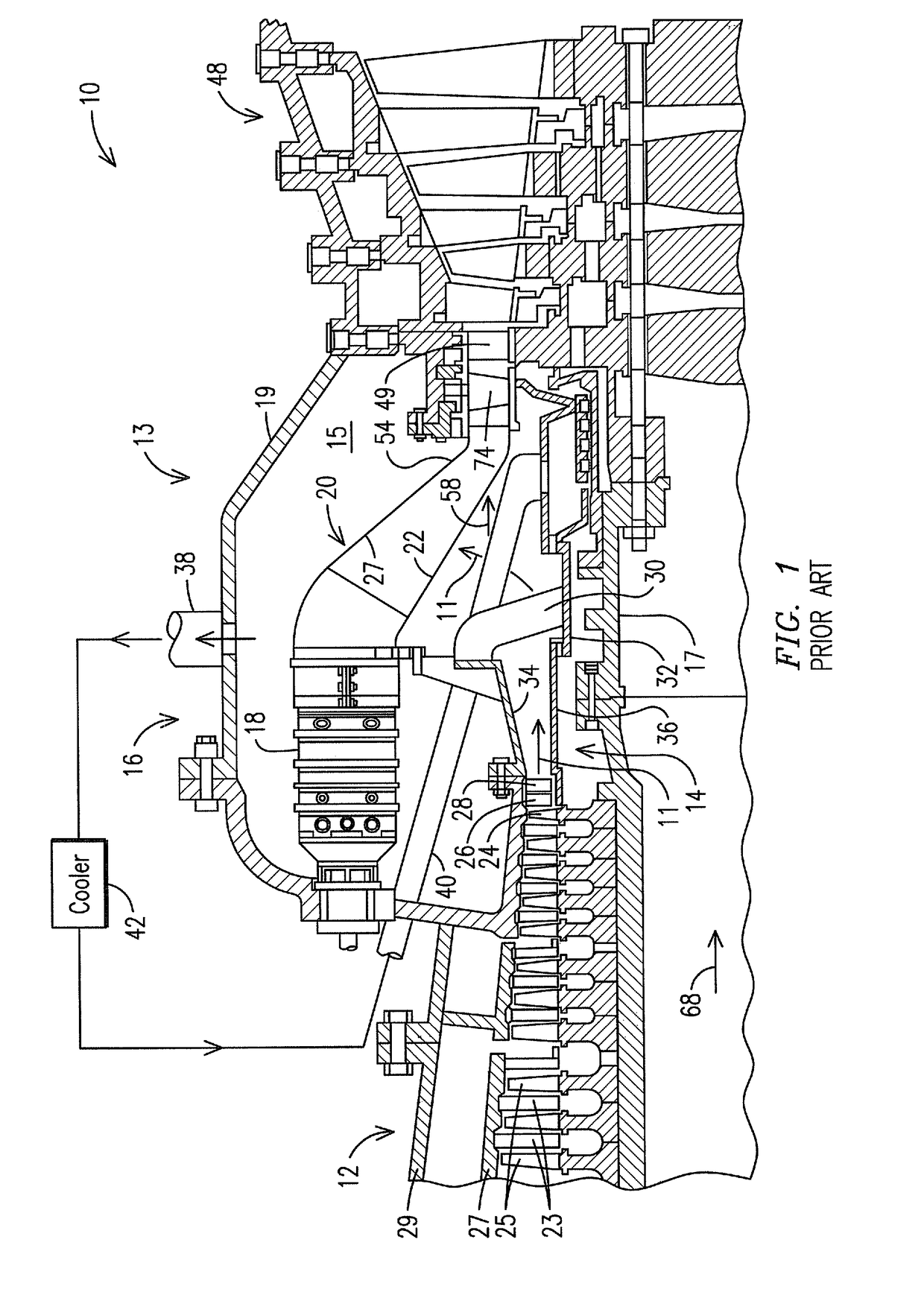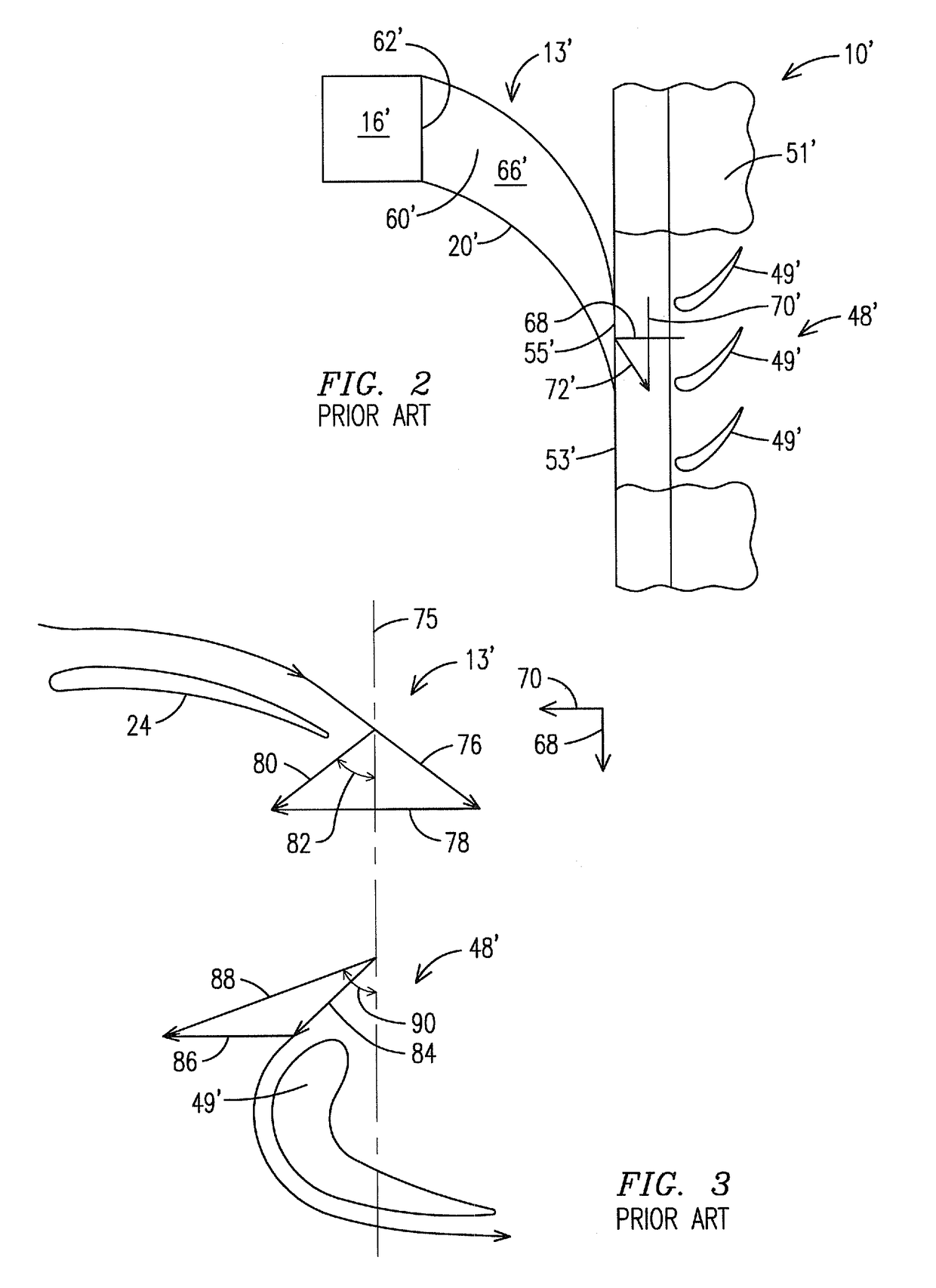Mid-section of a can-annular gas turbine engine to introduce a radial velocity component into an air flow discharged from a compressor of the mid-section
a gas turbine engine and radial velocity technology, applied in the direction of machines/engines, stators, liquid fuel engines, etc., can solve the problems of fluid friction induced pressure loss and flow turbulen
- Summary
- Abstract
- Description
- Claims
- Application Information
AI Technical Summary
Benefits of technology
Problems solved by technology
Method used
Image
Examples
Embodiment Construction
[0036]The description below is organized into two major sections: 1) a description of alternatives for generating mixed flow or radial flow in the turbine midsection, and 2) a description of alternatives for delivering the mixed flow or radial flow to the combustor head-end.
1. Initiation of Mixed-Flow or Radial Flow
[0037]As discussed above, the inventors of the present invention recognized that an improved midframe portion of the gas turbine engine features initiating a mixed air flow (axial, tangential plus radial flow velocities) or a completely radial air flow from the diffuser outlet. By initiating the mixed-air flow or radial air flow from the diffuser outlet, the air flow passes from the diffuser outlet to the combustor head inlet while undergoing a reduced total angle of rotation when compared to the air flow with the conventional midframe portion. The embodiments of the present invention discussed below in FIGS. 4-8 introduce various midframe designs in which the mixed air f...
PUM
 Login to View More
Login to View More Abstract
Description
Claims
Application Information
 Login to View More
Login to View More - R&D
- Intellectual Property
- Life Sciences
- Materials
- Tech Scout
- Unparalleled Data Quality
- Higher Quality Content
- 60% Fewer Hallucinations
Browse by: Latest US Patents, China's latest patents, Technical Efficacy Thesaurus, Application Domain, Technology Topic, Popular Technical Reports.
© 2025 PatSnap. All rights reserved.Legal|Privacy policy|Modern Slavery Act Transparency Statement|Sitemap|About US| Contact US: help@patsnap.com



